Address
304 North Cardinal
St. Dorchester Center, MA 02124
Work Hours
Monday to Friday: 7AM - 7PM
Weekend: 10AM - 5PM
Address
304 North Cardinal
St. Dorchester Center, MA 02124
Work Hours
Monday to Friday: 7AM - 7PM
Weekend: 10AM - 5PM
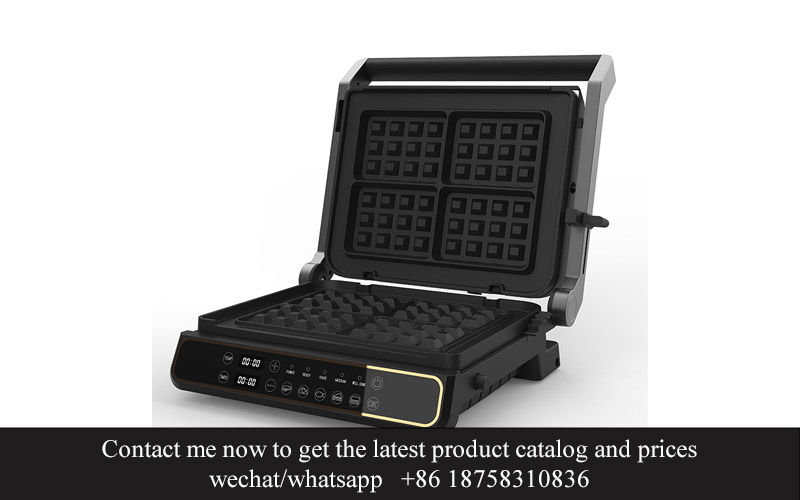
In this ever-evolving world of culinary delights, where every cook dreams of mastering the perfect dish, the tools of the trade play a pivotal role. Among these tools, cookware stands out as the unsung hero of the kitchen. With a plethora of options available, the quest for the ideal set has become more nuanced. Enter LFGB-compliant non-stick coatings, a game-changer that’s not just about cooking ease but also about health and sustainability. Let’s delve into why these coatings are becoming the go-to choice for kitchen enthusiasts everywhere.
In recent years, the culinary landscape has undergone a significant shift, with health-conscious cooking becoming a mainstream trend. As people seek out more nutritious and wholesome meals, the demand for kitchen appliances that enhance the cooking experience without compromising on health has surged. Enter LFGB-compliant non-stick coatings, which are not only revolutionizing the way we cook but also paving the path to a healthier kitchen.
The concept of non-stick cookware is nothing new, but the introduction of LFGB-compliant coatings has brought a new level of safety and reliability to the table. For those unfamiliar with the term, LFGB stands for the German Food, Drug, and Cosmetic Act, which is one of the strictest regulations in the world regarding the safety of materials in contact with food. This certification ensures that the non-stick coatings are free from harmful chemicals, making them a safer choice for both the consumer and the environment.
With the health craze in full swing, consumers are more vigilant than ever about what they bring into their homes and kitchens. Non-stick coatings that adhere to LFGB standards are gaining traction due to their ability to eliminate the need for excessive oil, thus reducing the calorie count and fat content of dishes. This is a game-changer for those following diets or simply looking to improve their culinary health.
One of the standout features of LFGB-compliant non-stick coatings is their durability. Traditional non-stick coatings can wear off over time, releasing particles into the food that may be harmful. In contrast, these new coatings are designed to last, maintaining their non-stick properties even after countless uses. This not only prolongs the life of the cookware but also ensures that the food being prepared remains uncontaminated.
Another appealing aspect of LFGB-compliant non-stick cookware is the ease of cleaning. Say goodbye to those endless scrubbing sessions – these coatings are so non-stick that food simply slides off, making clean-up a breeze. This is particularly beneficial for those with busy schedules or anyone who appreciates a quick and hassle-free cooking experience.
As the awareness of environmental issues grows, eco-friendly products are becoming more popular. LFGB-compliant non-stick coatings are a testament to this shift, as they are free from perfluorooctanoic acid (PFOA), a chemical that has been linked to various health issues. By choosing cookware with these coatings, consumers are making a conscious effort to reduce their carbon footprint and promote a healthier planet.
The appeal of LFGB-compliant non-stick coatings is not just limited to the health and environmental benefits. They also offer a performance edge that can transform the cooking experience. The smooth, even cooking surface allows for better heat distribution, resulting in perfectly seared meats and perfectly sautéed vegetables. This means that even amateur chefs can achieve professional-quality results without the need for constant supervision.
The kitchen appliance industry has taken notice of this shift, and manufacturers are rapidly adopting LFGB-compliant non-stick coatings. From premium brands to budget-friendly options, the market is saturated with cookware that promises a healthier and more enjoyable cooking experience. Consumers are spoilt for choice, and the demand for LFGB-compliant products continues to rise.
One of the reasons for this popularity is the versatility of LFGB-compliant non-stick cookware. Whether you’re frying, sautéing, or boiling, these coatings can handle it all. The non-reactive nature of the coatings also means that your food won’t pick up any unwanted flavors, ensuring that each dish is as pure and authentic as possible.
Innovation in the kitchen doesn’t stop at the non-stick coatings. Many brands are now integrating these coatings into a variety of cookware pieces, including pans, skillets, and even baking dishes. This means that a single set of LFGB-compliant cookware can cover a multitude of cooking tasks, streamlining the kitchen and reducing the need for multiple sets.
The rise of LFGB-compliant non-stick coatings is a clear indication of where the kitchen appliance industry is headed. As consumers continue to prioritize health, sustainability, and convenience, the demand for high-quality, eco-friendly products will only increase. The future of cooking looks bright, with a host of new technologies and materials that are designed to make life in the kitchen healthier, more enjoyable, and more efficient.

LFGB, or the Lebensmittel- und Futtermittelbuchung (German Food and Feed Code), is a comprehensive set of regulations that governs food safety in Germany. It’s a standard that has become increasingly influential worldwide, especially in the realm of food contact materials. To truly grasp the significance of LFGB-compliant non-stick coatings, it’s essential to delve into what these standards entail.
The LFGB covers a wide range of food contact materials, from kitchen utensils to packaging, ensuring that they do not pose any health risks. At the heart of these regulations is the principle that any substance that comes into contact with food must be safe. This means that the materials used must not leach harmful chemicals into the food, which could lead to adverse health effects.
One of the key aspects of the LFGB is the meticulous testing and approval process for materials that come into contact with food. This process ensures that products are free from heavy metals, plasticizers, and other harmful substances that could migrate into food. The standards are rigorous, and they require manufacturers to provide extensive documentation to prove the safety of their products.
The LFGB also outlines specific limits for allowable substances in food contact materials. For example, the migration of certain plasticizers, like DEHP (di(2-ethylhexyl)phthalate), into food is strictly regulated due to health concerns. These limits are set based on extensive scientific research and aim to protect consumers from potential health risks.
In the context of non-stick coatings, the LFGB is particularly relevant because these coatings are used on a wide variety of cookware. These coatings are designed to make cooking easier and more efficient by preventing food from sticking to pots and pans. However, they can also pose a health risk if they contain harmful chemicals that can leach into the food.
Non-stick coatings are typically made from polytetrafluoroethylene (PTFE), also known as Teflon. While PTFE itself is generally considered safe, it is often coated with other substances to improve its durability and performance. The LFGB ensures that these additional substances are safe for use in food contact applications.
The standard includes specific requirements for the composition of non-stick coatings, detailing the types and amounts of substances that can be present. This includes not only the base PTFE but also any additives used to enhance the coating’s properties. The additives must be carefully selected to ensure they do not contain harmful substances or exceed the permitted limits.
Another important aspect of the LFGB is the assessment of migration rates. This involves testing how much of the coating material can be transferred to food under normal cooking conditions. The results of these tests help determine the suitability of the coating for food contact applications and ensure that the migration levels remain well below the safety thresholds set by the standard.
In addition to the composition and migration rates, the LFGB also addresses the durability of the non-stick coatings. Cookware is subject to frequent use and cleaning, so the coatings must be able to withstand these conditions without degrading or releasing harmful substances. This is particularly important for products that are used for high-temperature cooking, as these conditions can accelerate the breakdown of the coating.
For consumers, the LFGB-compliance of non-stick coatings is a critical factor in their purchasing decisions. With health concerns on the rise, knowing that the cookware they choose meets these stringent safety standards can provide peace of mind. The standard also encourages innovation in the industry, as manufacturers seek to develop coatings that are not only safe but also more durable and environmentally friendly.
The LFGB is not just a regulatory framework; it’s a symbol of quality and safety. For non-stick coatings, it ensures that the products on the market are not only functional but also safe for everyday use. As consumers become more health-conscious and environmentally aware, the demand for LFGB-compliant products is likely to grow, further solidifying the importance of these standards in the food contact materials industry.
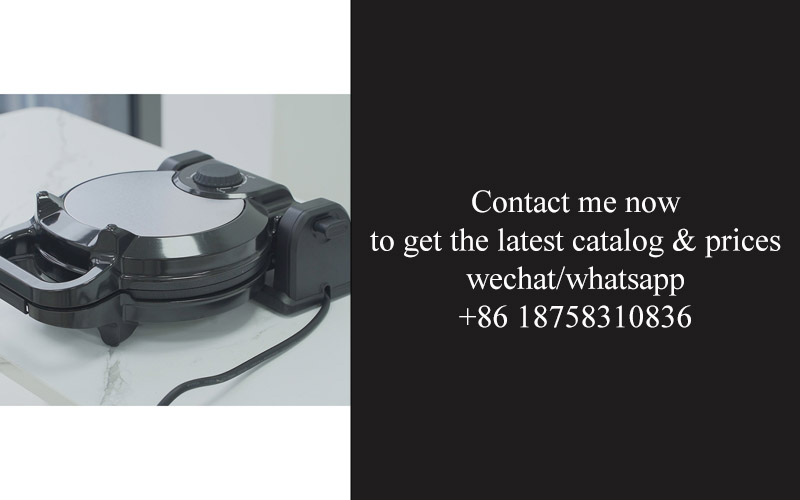
In recent years, there’s been a significant shift in the kitchen appliance market, with eco-friendly cookware leading the charge. Consumers are increasingly drawn to non-stick coatings that not only make cooking easier but also align with their environmental and health-conscious values. Let’s delve into why this non-stick revolution is capturing the hearts and minds of consumers everywhere.
The allure of non-stick cookware is undeniable. Imagine a pan that requires minimal oil, reduces the risk of food sticking, and makes cleaning a breeze. This convenience is a game-changer for busy cooks and health enthusiasts alike. The non-stick coating, often made from materials like PTFE (Teflon), has been a staple in cookware for decades, but the newer, eco-friendlier versions are gaining traction.
One of the key reasons for the surge in popularity of eco-friendly non-stick cookware is the growing awareness of the environmental impact of traditional non-stick coatings. Many consumers are concerned about the potential health risks associated with PTFE, particularly when it’s exposed to high temperatures, which can release harmful chemicals into food. This fear has led to a demand for alternatives that are both safe and sustainable.
Enter LFGB-compliant non-stick coatings. These coatings meet the stringent standards set by the German Federal Institute for Risk Assessment (BfR), ensuring that they are safe for food contact and free from harmful substances. The LFGB certification is highly respected in Europe and is often seen as a gold standard for food safety.
Consumers are going nuts for LFGB-compliant non-stick cookware because it offers a peace of mind that traditional non-stick options cannot. The assurance that these coatings are free from PFOA, PTFE, and other potentially harmful chemicals is a major selling point. Health-conscious individuals can now enjoy the convenience of non-stick cooking without compromising their well-being.
Moreover, eco-friendly non-stick cookware is not just about health; it’s also about sustainability. These coatings are often made from recycled materials or are designed to be recyclable themselves, reducing the environmental footprint. The demand for sustainable cookware reflects a broader shift in consumer behavior, where ethical considerations are just as important as performance.
The non-stick revolution is also driven by the versatility of eco-friendly cookware. These pans and skillets can be used on various heat sources, including induction cooktops, and are suitable for a wide range of cooking methods. Whether you’re sautéing, frying, or baking, these cookware pieces can handle it all, making them a valuable addition to any kitchen.
Another factor contributing to the popularity of eco-friendly non-stick cookware is the aesthetic appeal. Modern designs and vibrant colors are attracting consumers who want their kitchenware to be as stylish as it is functional. The combination of health, sustainability, and aesthetics is a powerful one that resonates with today’s consumers.
Furthermore, the performance of LFGB-compliant non-stick coatings is on par with traditional non-stick options. They provide the same level of ease when cooking and cleaning, which is a crucial factor for consumers who are looking for a seamless cooking experience. The durability of these coatings is also impressive, with many brands offering lifetime warranties, ensuring that the investment in eco-friendly cookware is a long-term one.
The non-stick revolution is not just a trend; it’s a movement. Consumers are voting with their dollars, choosing cookware that aligns with their values and priorities. As awareness of environmental and health issues continues to grow, it’s likely that eco-friendly non-stick cookware will become the norm rather than the exception.
In conclusion, the rise of LFGB-compliant non-stick cookware is a testament to the changing landscape of consumer preferences. It’s a win-win situation where health, sustainability, and performance come together to create a product that is not just a kitchen essential but also a statement of personal values. As the non-stick revolution gains momentum, it’s clear that eco-friendly cookware is here to stay.
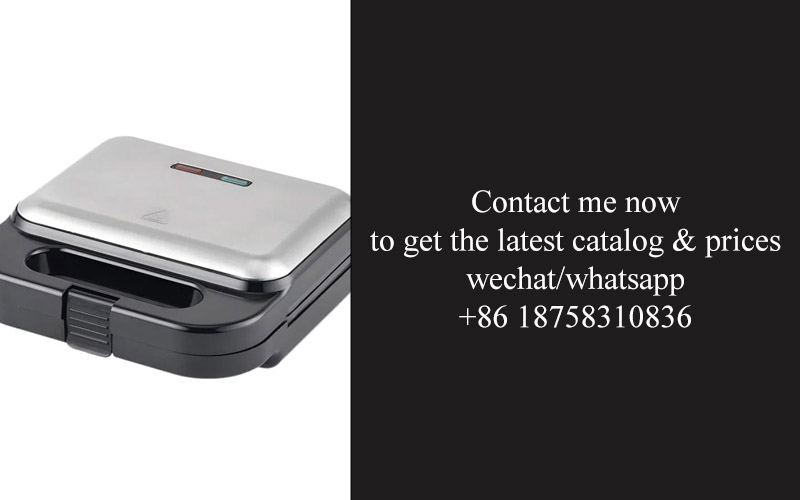
In the world of cookware, non-stick coatings have long been a staple, offering convenience and ease when it comes to cooking without the hassle of sticking. However, the landscape of non-stick technology has been revolutionized, especially with the introduction of LFGB-compliant coatings. These advancements not only enhance performance but also set new standards for safety and environmental responsibility.
The shift towards LFGB-compliant non-stick coatings is driven by a growing awareness among consumers about the health and environmental impacts of cookware. The LFGB (Legislation on the Materials and Articles Intended to Come into Contact with Food) is a stringent set of European regulations that ensure the safety of food contact materials. These coatings are designed to meet these high standards, offering a peace of mind that traditional non-stick coatings might not provide.
One of the key features that set LFGB-compliant coatings apart is their use of safe, environmentally friendly materials. Traditional non-stick coatings often contain perfluorooctanoic acid (PFOA), a chemical that has been linked to health concerns. LFGB-compliant coatings, on the other hand, are free from PFOA and other harmful substances, making them a healthier choice for both the cook and the planet.
The technology behind these coatings has seen significant improvements. Manufacturers have developed new formulations that are not only non-toxic but also highly durable. These coatings are designed to last longer, reducing the frequency of cookware replacement and thus minimizing waste. The longevity of LFGB-compliant coatings also means that they maintain their non-stick properties over time, which is a significant advantage over older, less durable coatings.
Another innovation is the improved release properties of these coatings. Cooks often find that food can stick to cookware, leading to frustration and a need for more oil or butter. LFGB-compliant coatings are engineered to provide an ultra-smooth surface that releases food effortlessly, even at high temperatures. This not only makes cooking more enjoyable but also reduces the need for excessive fat, contributing to healthier eating habits.
Moreover, the application process of LFGB-compliant coatings has been refined to ensure a consistent and even distribution across the cookware surface. This meticulous approach minimizes the risk of any uneven coating that could potentially lead to food sticking or uneven cooking. The result is a cookware piece that performs reliably, season after season.
The eco-friendliness of LFGB-compliant coatings is not just about the materials used; it also extends to the manufacturing process. Companies are increasingly adopting sustainable practices that reduce energy consumption and waste production. This commitment to environmental stewardship is a testament to the forward-thinking approach that underpins the development of these coatings.
The aesthetic appeal of LFGB-compliant cookware cannot be overlooked. Modern consumers are not just looking for functional cookware; they are also seeking pieces that complement their kitchen decor. The sleek, clean look of cookware with LFGB-compliant coatings is not only visually appealing but also reflects a commitment to quality and safety.
In the realm of non-stick technology, the introduction of LFGB-compliant coatings has marked a significant shift. These coatings offer a blend of health, performance, and environmental responsibility that is resonating with consumers worldwide. The non-stick revolution is not just about making cooking easier; it’s about making it healthier and more sustainable for everyone involved. As the demand for these innovative coatings grows, so does the expectation for a future where cookware is not just a tool but a symbol of our collective responsibility towards the planet and our health.
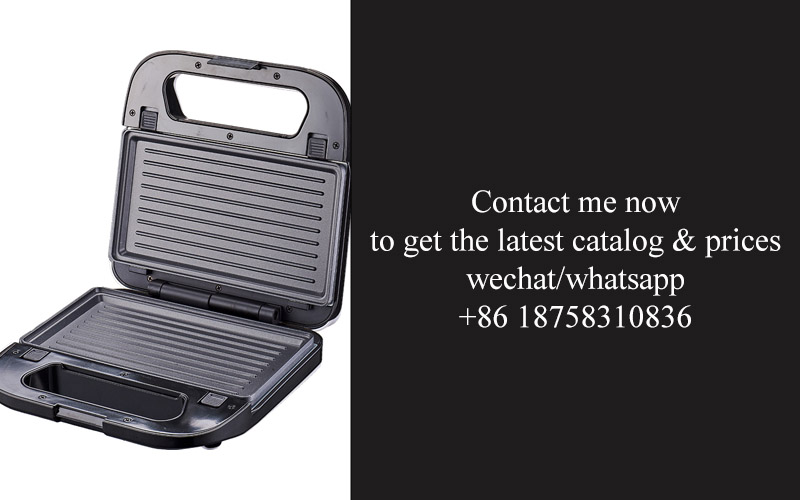
In the world of kitchen appliances, non-stick coatings have become a staple, making cooking a breeze for many. But what sets LFGB-compliant non-stick coatings apart? Let’s delve into the health benefits, superior performance, and impressive durability that these coatings offer.
Health-conscious consumers are increasingly turning to LFGB-compliant non-stick coatings due to their commitment to safety. These coatings are designed without harmful substances like PFOA and PTFE, which were once common in non-stick pans but have since been linked to health concerns. By adhering to the strict LFGB (German Food, Drug, and Cosmetic Products Act) standards, these coatings ensure that your cooking experience is not just convenient but also safe for your health.
The performance of non-stick coatings is a game-changer in the kitchen. LFGB-compliant coatings are engineered to provide a super-smooth surface that reduces the need for excessive oil or butter. This not only makes cooking healthier but also more enjoyable, as there’s less cleaning involved after use. The non-stick quality allows for delicate dishes like eggs and pancakes to be cooked with ease, without the fear of sticking or burning.
Durability is another key aspect that LFGB-compliant non-stick coatings bring to the table. These coatings are designed to withstand the rigors of everyday cooking, including high heat and frequent use. Unlike older non-stick coatings that might wear off after a few months, LFGB-compliant versions are formulated to maintain their non-stick properties for years. This longevity means that your cookware investment will pay off, saving you money in the long run.
The eco-friendly aspect of LFGB-compliant non-stick coatings is also a major draw for consumers. With environmental concerns at the forefront, these coatings are often made from sustainable materials, reducing the carbon footprint associated with traditional non-stick pans. This not only benefits the planet but also appeals to those who are looking for ways to reduce their ecological impact through everyday choices.
One of the standout features of LFGB-compliant non-stick coatings is their ability to distribute heat evenly across the cooking surface. This even heat distribution prevents hotspots, ensuring that food cooks uniformly and reduces the risk of burning. For those who enjoy cooking but dread the potential for unevenly cooked meals, this is a significant advantage.
Cooking enthusiasts appreciate the versatility that LFGB-compliant non-stick coatings offer. They can be used on a variety of cooking surfaces, including induction cooktops, and are often oven-safe up to certain temperatures. This versatility means that you can use these pans for a wide range of recipes, from searing steaks to simmering sauces, without worrying about compatibility issues.
The aesthetic appeal of LFGB-compliant non-stick cookware should not be overlooked. These coatings come in a variety of colors and finishes, allowing you to choose cookware that complements your kitchen’s style. Whether you prefer a sleek, modern look or something more classic, there’s an option to match your personal taste.
In the realm of customer satisfaction, LFGB-compliant non-stick coatings often come with extended warranties. This is a testament to the manufacturers’ confidence in the quality and longevity of their products. Knowing that your cookware is backed by a warranty gives peace of mind, should you encounter any issues down the line.
Lastly, the ease of maintenance is a significant benefit of LFGB-compliant non-stick coatings. Cleaning up after a meal is a breeze, as food particles typically release easily from the surface. This not only saves time but also minimizes the use of harsh cleaning agents, which can be harsh on the hands and the environment.
In summary, LFGB-compliant non-stick coatings offer a multitude of benefits that cater to the health-conscious consumer, the environmentally aware cook, and the busy household. With their health-friendly composition, superior performance, impressive durability, and eco-friendly attributes, these coatings are setting the standard for non-stick cookware in the modern kitchen.
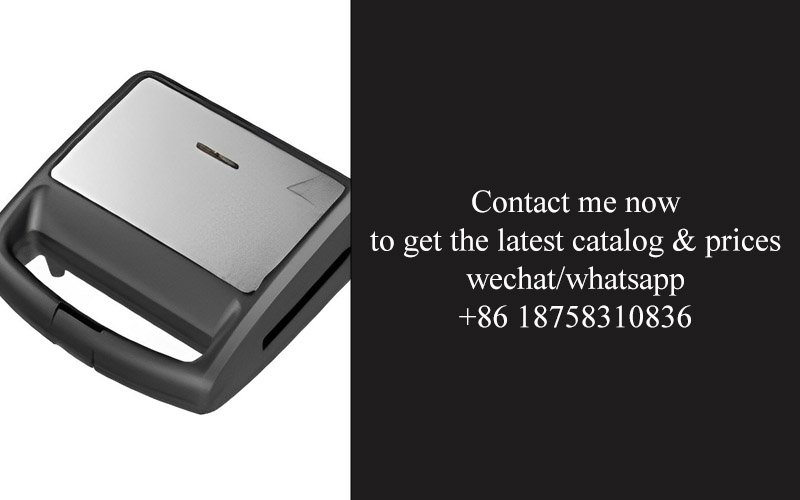
In recent years, there’s been a noticeable shift in consumer preferences when it comes to kitchenware. LFGB-compliant cookware has emerged as a top choice, and for good reasons. This section delves into what exactly makes LFGB-cookedware a must-have for many households.
People are more conscious than ever about what they’re putting into their bodies, and that extends to the pots and pans they use for cooking. LFGB-compliant cookware is often seen as a healthier option because it adheres to strict standards that ensure the materials used are safe for food contact. The label alone can be a reassuring sign to many health-conscious consumers.
The eco-friendly aspect of LFGB-compliant cookware is another major draw. With the growing concern for the environment, consumers are gravitating towards products that are not only safe for use but also sustainable. These cookware sets are often made with materials that are recyclable or sourced from renewable resources, which appeals to those looking to reduce their carbon footprint.
Cooking enthusiasts appreciate the performance benefits that LFGB-compliant cookware offers. The non-stick coatings, in particular, allow for healthier cooking methods, such as using less oil, which is a win for heart health. The ease of cooking and cleaning is also a huge plus. No one wants to spend hours scrubbing pots after a meal, and these cookware sets make that a thing of the past.
Durability is a key factor in cookware choice. Consumers want products that stand the test of time and can withstand the rigors of everyday cooking. LFGB-compliant cookware is known for its robust construction and long-lasting non-stick surfaces. This longevity not only saves money in the long run but also reduces the frequency of replacements, which is better for both the consumer’s wallet and the environment.
Safety is paramount when it comes to kitchenware, and LFGB-compliant cookware delivers on that front. The LFGB (Law on the Materials and Articles Intended to Come into Contact with Food) is a stringent set of regulations that ensures the materials used in cookware are free from harmful substances. This gives consumers peace of mind that their meals are being prepared in pots and pans that are safe for their family.
Design and aesthetics play a role in cookware selection, too. LFGB-compliant cookware often comes in sleek and modern designs that look great on kitchen counters. The contemporary styles are not only practical but also add a touch of style to the cooking space, which is a factor that many consumers consider.
Another reason LFGB-compliant cookware is a must-have is its versatility. These cookware sets often include a variety of pieces that cater to different cooking needs, from frying to simmering. This means that consumers can rely on a single set to handle a range of recipes, reducing the clutter in their kitchen cabinets.
Branding and customer loyalty also contribute to the popularity of LFGB-compliant cookware. Many well-known brands have jumped on board, offering their own versions of LFGB-compliant cookware. Consumers who trust these brands for other kitchen products are likely to choose them for their cookware as well.
Finally, the convenience factor cannot be overlooked. Modern life is fast-paced, and convenience is king. LFGB-compliant cookware often features features like induction-compatible bases, ergonomic handles, and quick-cook technology. These conveniences make cooking more enjoyable and less of a chore.
In conclusion, LFGB-compliant cookware has become a must-have due to its health benefits, environmental consciousness, superior performance, durability, safety, aesthetic appeal, versatility, brand loyalty, and convenience. As consumers continue to seek out the best products for their kitchens, it’s clear that LFGB-compliant cookware has found a permanent spot in the hearts and homes of many.
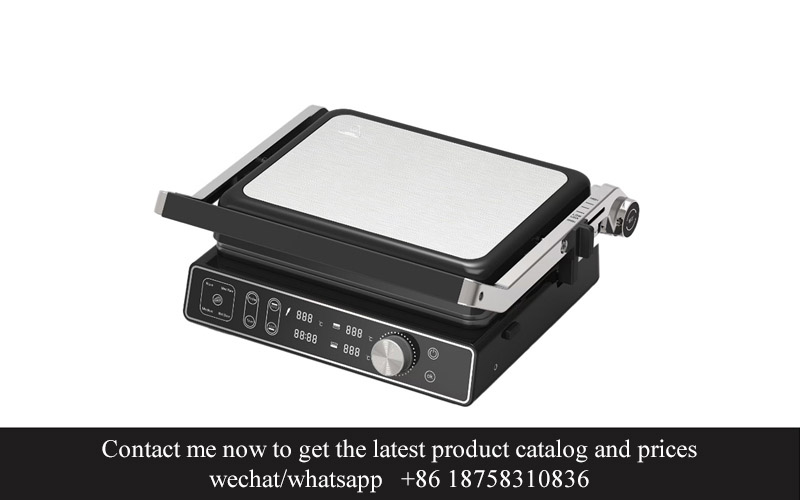
In the ever-evolving landscape of kitchen appliances, LFGB-compliant non-stick coatings have emerged as a game-changer. These innovative coatings are not just about making cooking easier; they’re redefining the industry with a focus on health, sustainability, and performance. Let’s delve into how these coatings are reshaping the kitchen appliance market.
Cooking enthusiasts and health-conscious consumers alike are gravitating towards cookware that not only performs well but also adheres to stringent safety standards. LFGB, or the German Food, Drug, and Cosmetic Act, sets the bar high for food contact materials, ensuring that they are safe for everyday use. This certification has become a beacon for manufacturers looking to stand out in a crowded market.
The demand for eco-friendly products has surged, and LFGB-compliant non-stick coatings are at the forefront of this movement. Consumers are increasingly aware of the environmental impact of their purchases, and cookware that is both non-toxic and durable is becoming a top priority. This shift in consumer behavior is driving appliance manufacturers to invest in research and development to create sustainable alternatives.
As the kitchen appliance industry embraces LFGB-compliant non-stick coatings, we’re seeing a rise in innovative designs that cater to the modern cook’s needs. Cookware with these coatings often features ergonomic handles, sleeker designs, and advanced materials that offer superior heat distribution. These innovations are not just aesthetically pleasing; they enhance the overall cooking experience by reducing the risk of sticking and allowing for healthier cooking methods like sautéing and grilling.
The performance of LFGB-compliant non-stick coatings is another key factor in their growing popularity. These coatings are designed to last, which means less frequent replacement and a lower environmental footprint. The non-stick properties are maintained over time, ensuring that food releases easily and cleaning is a breeze. This longevity is particularly appealing to busy households and those who prefer to invest in quality over quantity.
Safety is paramount in the kitchen, and LFGB-compliant non-stick coatings address this concern head-on. They are free from harmful chemicals like PFOA and PTFE, which have been linked to health issues. The peace of mind that comes with knowing your cookware is safe for you and your family is invaluable. As awareness of these potential health risks grows, consumers are more likely to seek out LFGB-certified products.
The market for LFGB-compliant non-stick coatings is also being influenced by the rise of health-focused cooking trends. From veganism to clean eating, consumers are looking for cookware that supports their dietary choices. Non-stick coatings that allow for healthier cooking methods, such as using less oil, are becoming a staple in many kitchens. This aligns with the broader trend of health and wellness, which is driving the demand for cookware that promotes healthier lifestyles.
The kitchen appliance industry is also responding to the globalization of consumer preferences. LFGB-compliant non-stick coatings are not just popular in Europe and the United States; they are gaining traction worldwide. As consumers become more informed and value-conscious, they are seeking out products that meet international safety standards, making LFGB-compliant cookware a global must-have.
The integration of smart technology in kitchen appliances is another trend that is being influenced by LFGB-compliant non-stick coatings. As manufacturers continue to innovate, they are incorporating smart features into cookware that not only enhance performance but also provide valuable insights into cooking techniques and health benefits. This fusion of technology and safety is setting new standards in the kitchen appliance industry.
In conclusion, LFGB-compliant non-stick coatings are not just a passing fad; they are a cornerstone of the kitchen appliance industry’s future. Their emphasis on health, performance, and durability is resonating with consumers who are looking for cookware that not only meets their cooking needs but also aligns with their values. As the market continues to evolve, it’s clear that LFGB-compliant non-stick coatings are here to stay, shaping the kitchen appliance industry for the better.

In today’s world, where sustainability and environmental consciousness are at the forefront of consumer concerns, eco-friendly cookware has emerged as a standout choice. The shift towards eco-conscious cookware is not just a passing trend; it’s a movement that reflects a deeper commitment to the planet and our health. Here’s a closer look at why eco-friendly cookware, particularly LFGB-compliant non-stick coatings, is becoming the new black.
Eco-friendly cookware is crafted with materials that have a minimal environmental footprint. From recycled metals to sustainable woods, these products are designed to reduce waste and pollution. The use of LFGB-compliant non-stick coatings, which adhere to strict European standards, ensures that the cookware is not only safe for food contact but also environmentally responsible. This combination of health and eco-friendliness is what makes eco-conscious cookware so appealing.
One of the key reasons eco-friendly cookware is gaining traction is its impact on health. Traditional non-stick coatings, while convenient, have been linked to the release of harmful chemicals when overheated. LFGB-compliant non-stick coatings, on the other hand, are free from PFOA and PTFE, two of the most notorious chemicals associated with health risks. This peace of mind is a major draw for health-conscious consumers who want to enjoy their cooking without compromising their well-being.
The performance of eco-friendly cookware is also a major selling point. With advanced materials that distribute heat evenly, these products are not only safer but also more efficient. This means less energy is wasted, and food cooks faster and more evenly, resulting in tastier meals. The non-stick nature of the LFGB-compliant coatings also means less oil is needed, which can lead to healthier cooking practices and reduced fat content in dishes.
Durability is another critical factor that sets eco-friendly cookware apart. Unlike some traditional materials that may scratch or warp over time, many eco-friendly options are designed to withstand the rigors of daily cooking. The non-stick coatings, in particular, are known for their longevity, which means fewer replacements and a reduced environmental impact over time.
Consumers are also becoming increasingly aware of the lifecycle of their products. Eco-friendly cookware is often designed with the end in mind, featuring materials that can be recycled or composted at the end of their useful life. This longevity and sustainability factor resonates with consumers who are looking for products that offer more than just immediate gratification.
The market for eco-friendly cookware, especially LFGB-compliant non-stick coatings, is also being driven by demographic shifts. Younger generations, who are more likely to be environmentally conscious, are entering the cooking market in greater numbers. They are not just looking for products that perform well; they are also seeking products that align with their values and contribute to a healthier planet.
Another important trend is the globalization of cooking styles. As people travel more and try new cuisines, they are looking for cookware that can handle a variety of cooking techniques. Eco-friendly cookware that is versatile and can be used for anything from searing to simmering meets this need, making it a must-have in a diverse range of kitchens.
Moreover, the rise of social media and online reviews has given consumers a platform to share their experiences and preferences. When eco-friendly cookware, particularly LFGB-compliant non-stick coatings, is praised for its performance, health benefits, and environmental impact, it gains momentum in the market. Word-of-mouth and influencer endorsements are powerful tools that can quickly propel eco-friendly cookware to the forefront of kitchen appliance sales.
Lastly, the cost of living continues to rise, and consumers are always on the lookout for ways to save money. Eco-friendly cookware can be a cost-effective solution in the long run, as it often requires less energy and cleaning products, which can add up over time. This economic factor is an additional reason why eco-conscious cookware is becoming the new black in the kitchen appliance industry.
In conclusion, the environmental angle of eco-friendly cookware, particularly LFGB-compliant non-stick coatings, is a multifaceted trend that appeals to consumers’ health, performance, durability, and environmental values. As the kitchen appliance industry evolves, it’s clear that eco-conscious cookware is not just a fleeting fad; it’s a sustainable choice that is here to stay.

The demand for eco-friendly, health-conscious products has surged in recent years, and the kitchen appliance industry is no exception. Non-stick coatings, particularly those that comply with the stringent LFGB (German Food, Drug, and Cosmetic Products Act) standards, have become a game-changer. Here’s a closer look at the future of non-stick coatings in the European and American markets.
Non-stick coatings have long been a staple in cookware, offering ease of use and a quick clean-up. However, the evolution of these coatings has been a slow and steady process, with manufacturers constantly seeking to improve upon the health and environmental impact of their products. In Europe and the US, the rise of LFGB-compliant non-stick coatings has been driven by a few key factors.
For starters, consumer awareness about the potential health risks associated with traditional non-stick coatings, such as PFOA and PTFE, has grown exponentially. These chemicals, which were once considered safe, have been linked to various health issues, including cancer and thyroid disorders. As a result, consumers are increasingly seeking out alternatives that are free from these harmful substances.
The LFGB-compliant non-stick coatings have stepped into the spotlight due to their commitment to safety and sustainability. These coatings adhere to the strictest regulations for food contact materials in Germany, which are among the most rigorous in the world. By choosing LFGB-compliant cookware, consumers can be confident that their cooking experience is not just convenient but also safe.
In the European market, the trend towards LFGB-compliant non-stick coatings is being bolstered by the region’s strong emphasis on environmental protection and sustainability. The European Union has implemented numerous regulations aimed at reducing pollution and minimizing the use of harmful chemicals in everyday products. As a result, consumers are more likely to favor cookware that meets these high environmental standards.
Similarly, in the United States, the market for LFGB-compliant non-stick coatings is gaining momentum. The US has seen a rise in health-conscious consumers who are not only looking for safe cookware but also products that align with their values of sustainability. The demand for eco-friendly cookware has been further fueled by the growing number of plant-based diets and the desire to reduce the carbon footprint.
Another factor contributing to the popularity of LFGB-compliant non-stick coatings is the continuous innovation in technology. Manufacturers are constantly developing new recipes for non-stick coatings that are not only safe but also highly durable and efficient. These advancements have made it possible for cookware to be non-stick without compromising on performance, which is a major draw for consumers.
The future of non-stick coatings in Europe and the US appears to be bright, with a few notable trends shaping the industry. One such trend is the integration of smart technology into cookware. Smart cookware equipped with non-stick coatings that comply with LFGB standards can provide real-time feedback on cooking temperatures and times, ensuring that food is cooked to perfection without the need for excessive oil or butter.
Additionally, there’s a growing preference for cookware that is not only safe and sustainable but also versatile. Consumers are looking for multifunctional pieces that can cater to various cooking styles and ingredients. LFGB-compliant non-stick coatings are well-suited for this, as they allow for a wide range of cooking techniques, from searing to sautéing, without the risk of food sticking or the need for harsh cleaning agents.
The future also holds the promise of even more eco-friendly materials and production processes. As the industry continues to innovate, we can expect to see non-stick coatings that are not just compliant with LFGB standards but also made from renewable resources and produced with minimal environmental impact.
In conclusion, the future of non-stick coatings in the European and American markets is poised for significant growth. The combination of heightened consumer awareness, strict regulatory standards, technological advancements, and an increasing demand for sustainable products ensures that LFGB-compliant non-stick coatings will remain a cornerstone in the kitchen appliance industry for years to come.

In the quest for the perfect cookware, many kitchen enthusiasts are turning to LFGB-compliant non-stick options. With a plethora of choices available, knowing how to pick the right set can be daunting. Here’s a guide to help you navigate through the myriad of options and find the ideal LFGB-compliant non-stick cookware for your kitchen.
When considering LFGB-compliant non-stick cookware, it’s crucial to understand the brand and its reputation. Researching customer reviews and ratings can provide invaluable insights into the quality and durability of the product. Look for brands that consistently receive positive feedback for their cookware, especially those that emphasize the use of LFGB-compliant materials.
The size and shape of the pots and pans you choose should align with your cooking habits and kitchen space. If you frequently cook for large groups, opting for larger pots and pans is essential. Conversely, if your kitchen is on the smaller side or you prefer cooking for one or two, selecting a set with appropriately sized pieces is more practical. Consider the dimensions and ensure they fit comfortably on your stove burners and in your cabinets.
The type of non-stick coating is another critical factor. LFGB-compliant cookware typically uses PTFE (Teflon) or ceramic coatings. While PTFE is known for its excellent non-stick properties and durability, ceramic coatings are favored for their eco-friendliness and health benefits. Weigh the pros and cons of each to determine which suits your preferences and needs better.
Non-stick cookware is designed to reduce the need for excessive oil, making it a healthier option. However, it’s essential to maintain the longevity of the coating by avoiding metal utensils and harsh cleaning agents. Opt for wooden, silicone, or plastic utensils to prevent scratching. When cleaning, use gentle dish soap and a soft sponge or cloth to preserve the integrity of the non-stick surface.
Ease of maintenance is a significant factor in choosing LFGB-compliant non-stick cookware. Look for sets that offer easy-to-clean designs, such as pots with induction-compatible bases and handles that stay cool to the touch. This not only simplifies cleanup but also adds convenience to your cooking routine.
The cookware’s compatibility with different cooking methods is another consideration. LFGB-compliant non-stick cookware is generally suitable for use on induction, electric, and gas cooktops. However, it’s important to check the specific product details to ensure it can withstand the heat and cooking techniques you prefer.
Price is often a deciding factor when purchasing cookware. LFGB-compliant non-stick sets can range widely in price, from budget-friendly options to high-end pieces. Determine your budget and find the best quality cookware that fits within it. Remember, investing in a higher-quality set can lead to a more enjoyable and efficient cooking experience.
The warranty provided by the manufacturer can offer peace of mind when purchasing LFGB-compliant non-stick cookware. Look for brands that offer robust warranties, covering potential defects in materials and workmanship. This ensures that if any issues arise, you’ll have support from the manufacturer.
Before making a final decision, take the time to compare different sets of LFGB-compliant non-stick cookware. Consider the overall design, including the aesthetics and functionality of the pots and pans. A well-designed set can enhance the look of your kitchen and streamline your cooking process.
Lastly, don’t forget to think about your future needs. If you anticipate expanding your kitchen or cooking habits, selecting a versatile set of cookware can save you from needing to replace pieces down the line.
In conclusion, choosing the right LFGB-compliant non-stick cookware for your kitchen involves considering brand reputation, size and shape, coating type, maintenance requirements, compatibility, price, warranty, design, and future needs. By carefully evaluating these factors, you can find a set that not only meets your current cooking preferences but also stands the test of time and use.